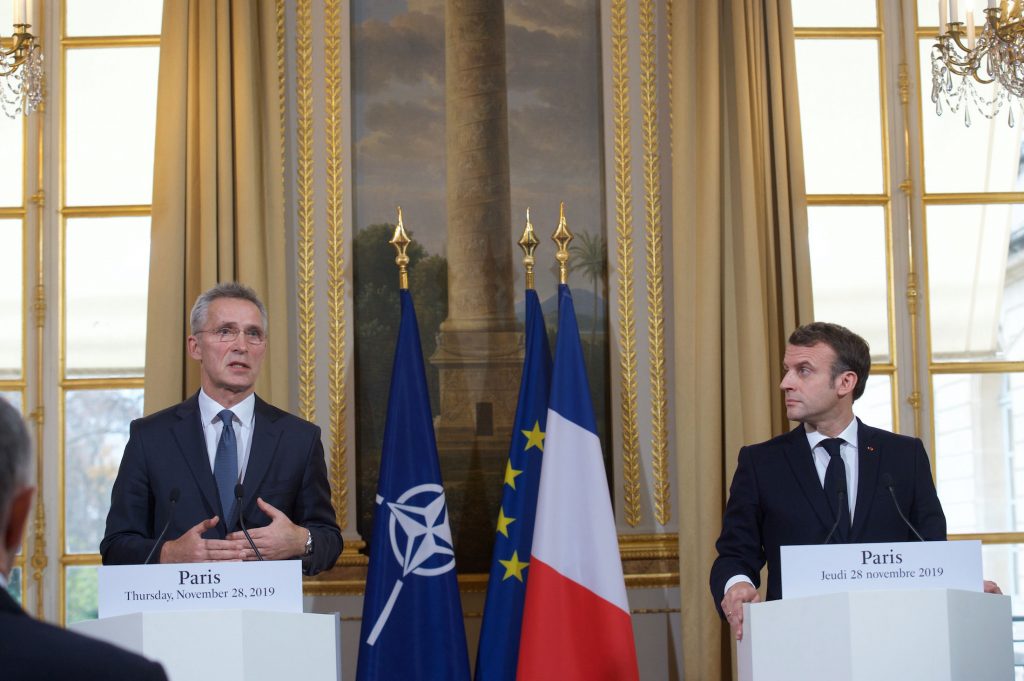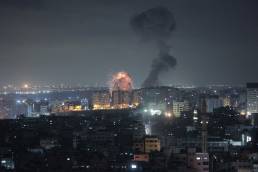With the eruption of a large-scale war in Europe for the first time since 1945, many Europeans will inevitably ask: what went wrong? Much of the explanation must lie in the psychology of one man, Vladimir Putin. But it is also important to ask what produced Putinism? Why did Europeans react both helplessly and spinelessly to a decade and a half of aggression, from the Georgia war of 2008 to the seizure of Crimea and the incursion into eastern Ukraine in 2014 to the full-scale onslaught of February 24, 2022? Europe, but also the United States, gave no answer at those earlier moments, and that passivity encouraged Putin’s most recent reckless and destructive gamble. Instead Europeans were apparently unable to escape from the trap set by Putin of increasing European energy dependence.
The energy trap and the security trap are inter-related. How far did the rapidity with which the Cold War ended and the Soviet Union collapsed sow the seeds of a new conflict with a global impact? Some of the answer has to do with the imperfections of the European project. Exploring the history of those imperfections may also suggest a repair or remedy for the old deficiencies.
Much of the debate has focused relentlessly and one-sidedly on a historical examination of the eastward expansion of NATO. Putin, and his many apologists and would-be “understanders” in Europe and North America, argue that a key understanding of the early 1990s was that there would be no expansion. There is now a drip drip of new revelations of how various western policy makers at the time had some sympathy for the Soviet view that later became a Russian obsession. For a time, the German government even played with the idea, which was seen as absurd in Washington, that former East Germany should be excluded from NATO.
Europe’s Miserable Failure
The real historical, and also contemporary, debate should focus on a different theme: Europe’s miserable failure to develop a new security apparatus at the moment when the world’s tectonic plates were shifting. It was the Europeans’ collective inability to deliver on a promise of the early 1990s, to move to a greater political union, that created a flaw that now needs to be fixed.
Chancellor Helmut Kohl and President François Mitterrand were acutely aware that Europe needed to do something bold to strengthen its architecture at a time when the old institutions of the Cold War were crumbling. A confident European response to the uncertainty might have been a political union, which would necessarily have been a military union.
But the only detailed plans were for a monetary union, and Europeans were the prisoners of the absence of any well-worked out blueprint. At the same time as the members of the European Community moved to monetary union, they then rejected a logical move that might have accompanied a single currency, and which would have offered a powerful and convincing response to the collapse of communism and the geopolitical upheaval of 1989-91.
The Incomplete Union
The 1991 Maastricht Treaty of course introduced the concept of European citizenship (Article 9), as well as a common foreign and security policy, and cooperation in the fields of justice and home affairs. But the union was incomplete, national citizenship remained, and the classic tests of civic value (are you prepared to die for your country?) was not put to Europe’s citizens.
The Defense Ministries of the European countries, and more importantly the influential military industrial lobbyists in the major states, France, Germany, and the United Kingdom, rejected any possibility of a military union, continuing to rely on the NATO treaty organization. Thus, when there was a need for a grand European gesture after 1989, there could be no plan for a common European army, but there was already a well-worked out roadmap for monetary union. Those monetary plans existed, not because of any geopolitical tension, but because the problem it set out to deal with – the issue of current account imbalances in Europe as well as globally, had been on agenda for decades, not years.
The security dimensions of European politics were widely discussed in the run-up to Maastricht, and formed a key part of the perceived tension between agreements on European Monetary Union and on European Political Union. France in particular was pressing for a stronger role of the defense organization of the Western European Union, i.e. the European members of NATO. The French insistence on a European solution was seen by the United Kingdom as unrealistic, but also as a move that would “detach” Germany from NATO. At the same time, Greece was also strongly opposed to a strengthening of the WEU without a guarantee of all European borders, and the Greek Prime Minister Konstantinos Mitsotakis told the Dutch presidency of the Maastricht Intergovernmental Conference that Greece would veto the arrangement. As it happened, on December 8, 1991, just a few days before the Maastricht conference met, the issue of security appeared to become much less acute as the three largest units in the Soviet Union concluded an agreement in Viskuli, near Belovezh in Belarus, to end the Union Treaty of 1922 that had created the Soviet Union: with that, the Soviet implosion seemed complete, and any security threat less than urgent. Thus attention focused on the monetary side, and the Maastricht process was lop-sided.

Macron Declared NATO to be Brain Dead
Traces of this earlier discussion of a security union have lingered on – as when President Macron, in response to the unpredictability of the Trump presidency, declared NATO to be brain dead. Putin’s threat mobilization in 2022 strengthened NATO, and makes it seem more necessary than ever. From this position of strength, it is possible to envisage an alternative solution, that sits well with the European tradition of thinking of concentric circles.
Europeans should also think of their collective security as an insurance against uncertainties in Eurasia, and against the possibility of new developments in the United States. What would happen if there were a repeat of Trumpism after the election of 2024 – either with a return of Donald Trump or with another, possibly even more radical and unpredictable character? How does Europe face the dynamic created by a stronger China that cultivates an anti-American axis with Russia?
The best answer would be a new genuinely European security core, that does not involve North America, but that would then be surrounded by a broader periphery pledged to respect and mutually guarantee frontiers – in line with the agreements on territorial integrity negotiated in the 1970s at the CSCE. That broader circle should have Europe at its core, and include not only the US and Canada, but also the rest of the Eurasian landmass, including China and Japan.
Money versus Security
The new wider institution might be thought of as a Northern Hemisphere Treaty Organization. The world is more interconnected than it was in the 1990s, and one of the dramatic and possibly stabilizing elements in the current crisis is the interest of China in stability across the Eurasian landmass.
In the early 1990s, Europeans should have thought about security, but they found the commitments too politically complex. So they turned their attention to money. The turn set up a vulnerability: not only the widespread feeling that Europeanness was all about money, materialism, energy dependence and economics, but also the absence of a security architecture that might protect them against the vagaries of political changes in Moscow, but also in Washington.
Copyright Header Picture: Princeton University, Copyright Textpicture: NATO
Könnte Sie auch interessieren
15. April 2024
Die Zukunft der Kriegsführung: KI im Gazastreifen
Technologie hat schon immer das Wesen der Kriegsführung neu definiert – heute…
11. April 2024
Staatsministerin Anna Lührmann: „Europa ist so attraktiv wie selten zuvor“
Für die Grünen-Bundestagsfraktion ist sie die Stimme Europas: Anna Lührmann,…
15. März 2024
Biden’s Executive Order on AI and the E.U.’s AI Act: A Comparative Analysis
AI ethics initiatives are essential in bringing about fairer, safer, and more…


